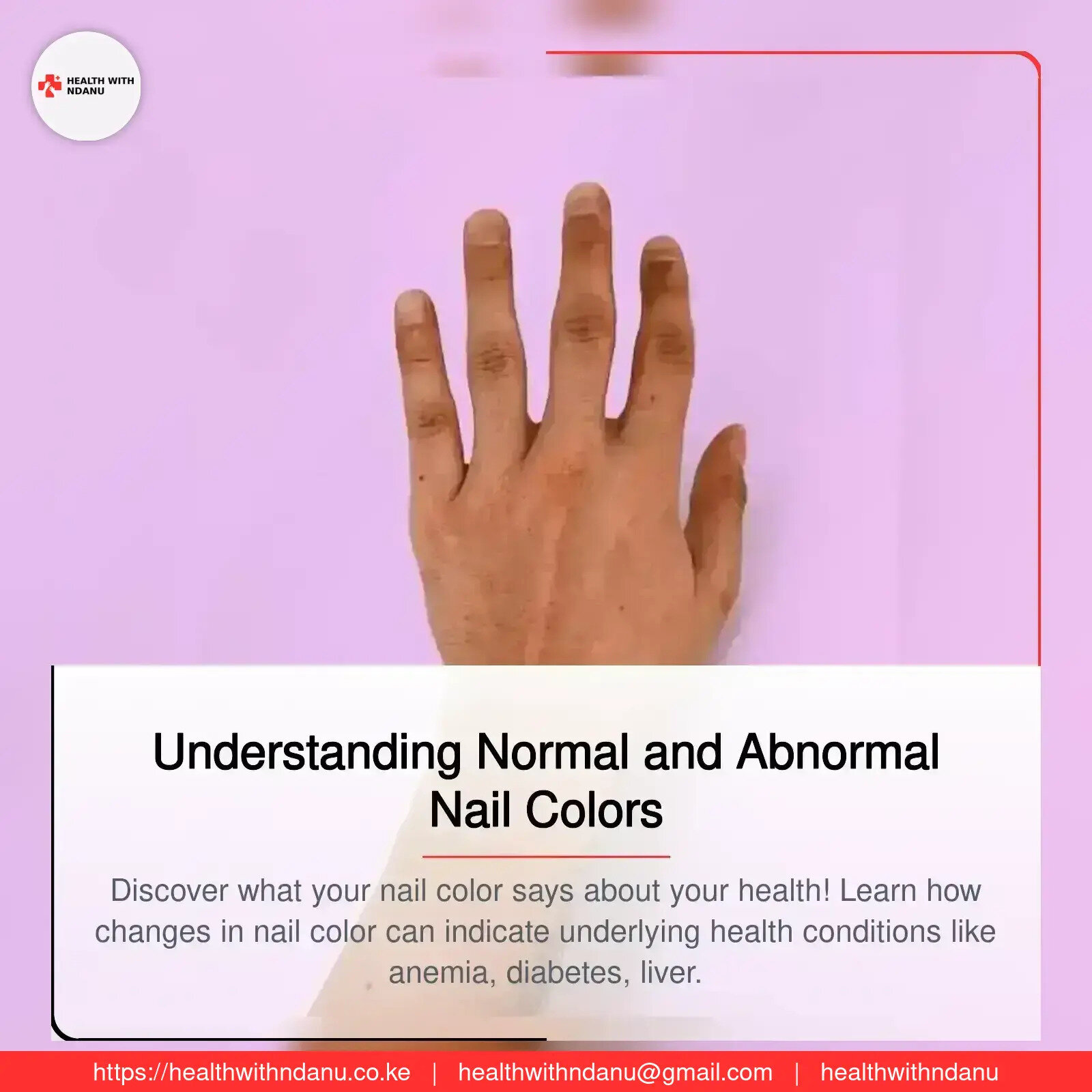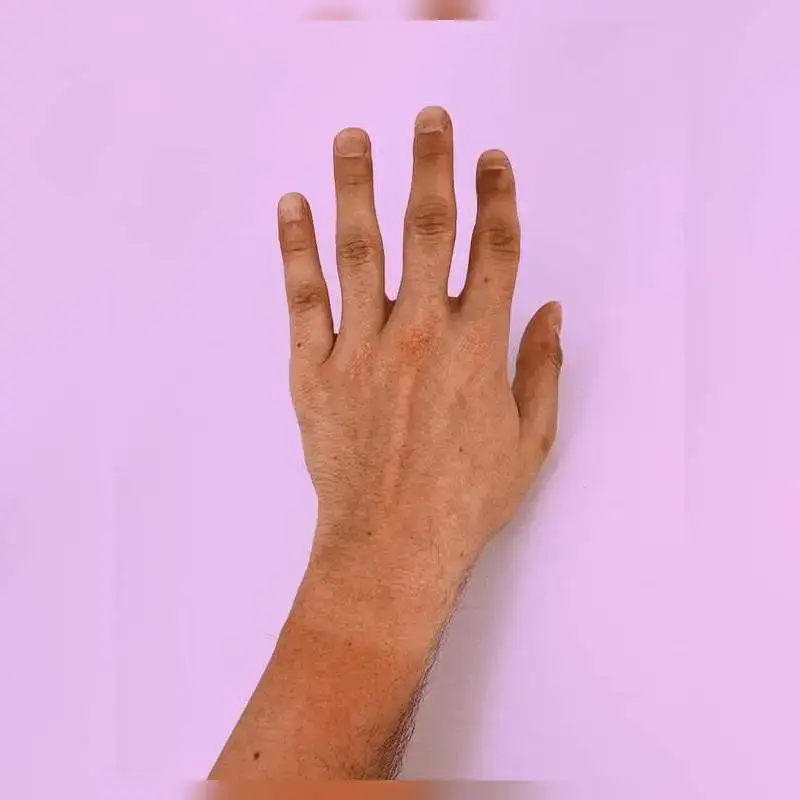Understanding Normal and Abnormal Nail Colors



Introduction
Our nails do more than just enhance our appearance—they can also be windows into our overall health. Changes in nail color can indicate underlying medical conditions, nutritional deficiencies, or infections that need attention. In this article, we will explore what different nail colors may reveal about your health and when you should seek medical advice.
Understanding Normal and Abnormal Nail Colors
Healthy nails are typically smooth, slightly pinkish, and uniform in color. Any significant change in nail color could be a sign that something is going on inside your body. Here’s what different nail colors might mean:
1. Pale or White Nails
Possible Causes:
- Anemia: A lack of red blood cells can cause pale nails.
- Liver disease: Conditions like hepatitis or cirrhosis can lead to pale or white nails.
- Malnutrition: Deficiencies in iron, zinc, and vitamin B12 may contribute to nail paleness.
- Congestive heart failure: Poor circulation can lead to pale or white nails.
What to Do: If your nails are consistently pale, consult a doctor for blood tests to check for anemia, liver function, or heart health.
2. Yellow Nails
Possible Causes:
- Fungal infections: This is the most common cause of yellowish nails.
- Lung disease: Chronic respiratory conditions, such as bronchitis, may lead to yellow nails.
- Diabetes: Poor circulation and high blood sugar can contribute to nail discoloration.
- Psoriasis: This skin condition can affect nails, causing them to turn yellow and become thickened.
What to Do: If your nails are persistently yellow, seek medical advice. Antifungal treatments or managing an underlying condition may be necessary.
3. Blue or Purple Nails
Possible Causes:
- Lack of oxygen: Conditions like asthma, chronic obstructive pulmonary disease (COPD), or heart disease can reduce oxygen levels in the blood.
- Raynaud’s disease: Poor blood circulation, often triggered by cold or stress, can cause nails to turn blue.
What to Do: If your nails frequently turn blue or purple, it’s essential to check your oxygen levels and consult a doctor.
4. Green Nails
Possible Causes:
- Bacterial infection: The presence of Pseudomonas bacteria can lead to greenish discoloration, especially in individuals who frequently have their hands in water.
- Fungal infection: Some fungal infections may cause greenish or dark discoloration.
What to Do: Green nails may require topical or oral antibiotics/antifungal treatments. Keep nails dry and clean to prevent infections.
5. Brown or Black Nails
Possible Causes:
- Trauma or injury: A bruise under the nail from an injury can appear black or brown.
- Melanoma (skin cancer): A dark streak or spot that grows or changes shape can indicate melanoma.
- Certain medications: Some drugs, including chemotherapy medications, can cause nail darkening.
What to Do: If a dark spot under your nail doesn’t grow out or changes in shape, consult a dermatologist immediately.
6. Red or Pink Nails
Possible Causes:
- High blood pressure: Increased blood flow can cause redness in the nails.
- Autoimmune diseases: Conditions like lupus or rheumatoid arthritis can lead to red nail beds.
- Heart infections (endocarditis): Red spots or streaks under the nails can indicate an infection in the heart.
- What to Do: If you notice persistent red discoloration, especially alongside other symptoms like fatigue or joint pain, seek medical advice.
7. White Spots on Nails
Possible Causes:
- Minor trauma: Bumps or pressure on the nail can lead to white spots.
- Zinc or calcium deficiency: Nutritional deficiencies can sometimes cause small white spots.
- Fungal infection: In some cases, white spots may indicate an early fungal infection.
What to Do: If the spots don’t grow out over time or are accompanied by other nail changes, consider checking for deficiencies or infections.
How to Maintain Healthy Nails
While some nail color changes are harmless, others can be a sign of serious health issues. Here are some tips to keep your nails healthy:
1. Eat a balanced diet rich in vitamins and minerals, especially iron, zinc, and B vitamins.
2. Keep your nails clean and dry to prevent infections.
3. Moisturize your nails and cuticles to prevent brittleness.
4. Avoid harsh chemicals and excessive nail treatments that can damage the nails.
5. Wear gloves when using cleaning products or working with water for extended periods.
6. Monitor any changes in your nails and seek medical advice if necessary.
When to See a Doctor
If you notice persistent nail discoloration, changes in nail texture, or accompanying symptoms like fatigue, shortness of breath, or skin changes, consult a healthcare professional. Early detection of underlying health conditions can make a significant difference in treatment and overall well-being.
Final Thoughts
Your nails can tell you a lot about your health, and paying attention to changes in their color can help you catch potential health issues early. If you notice unusual or persistent discoloration, don’t ignore it—speak to a doctor or dermatologist. Healthy nails reflect a healthy body, so take care of your nails as part of your overall wellness routine!
By sharing this article, you can help spread awareness about nail health and encourage others to monitor their own nails for potential health signs. Stay informed and take proactive steps to maintain good health!
Got Your Own Experience? Share with us
Kategoria Maarufu
Blogu Zinazotembelewa Zaidi
Daily Newsletter
Get all the top stories from Blogs to keep track.



